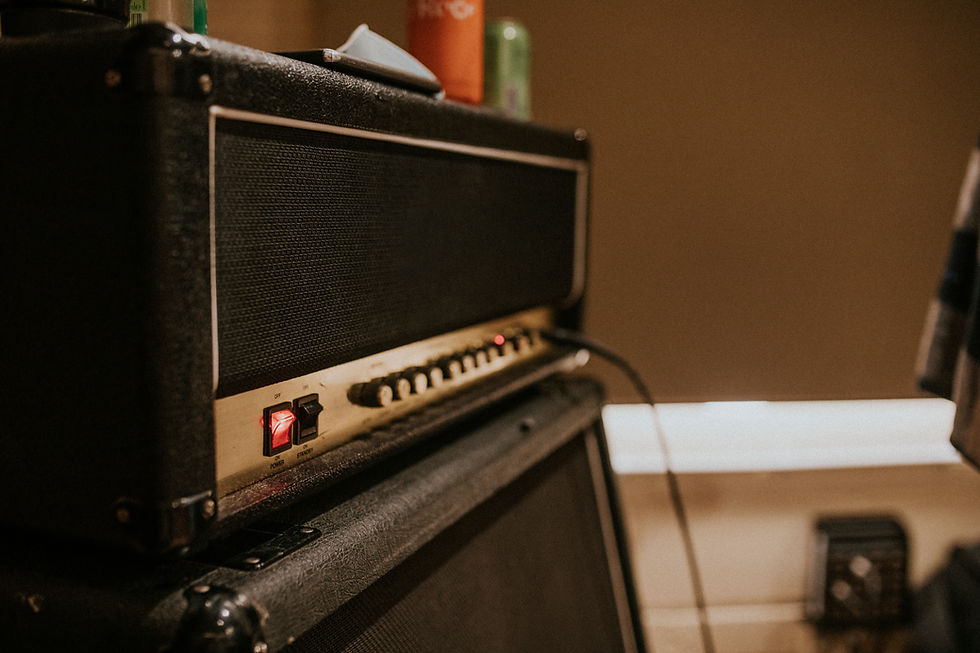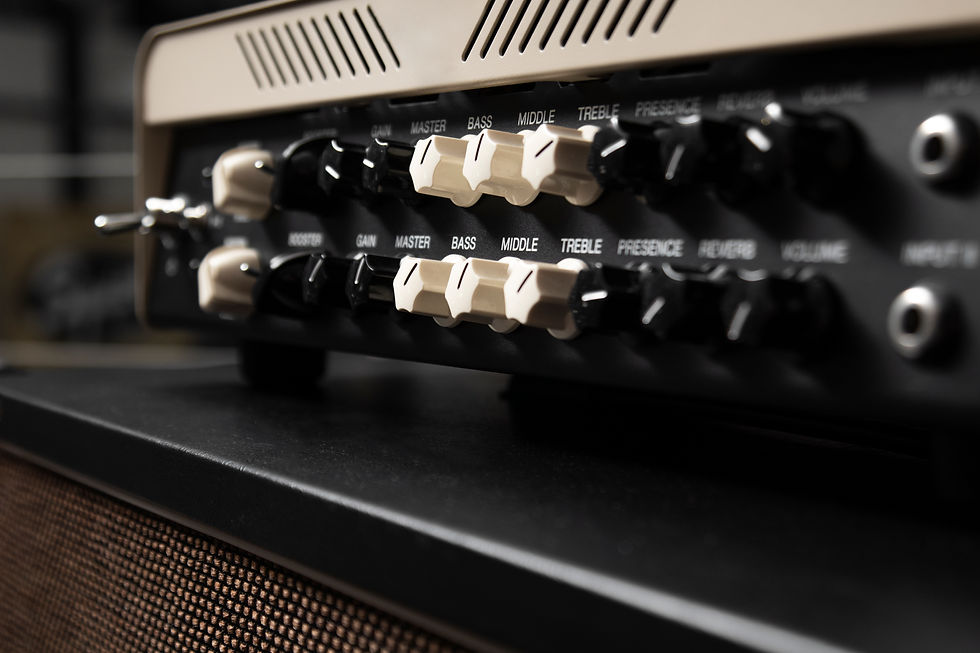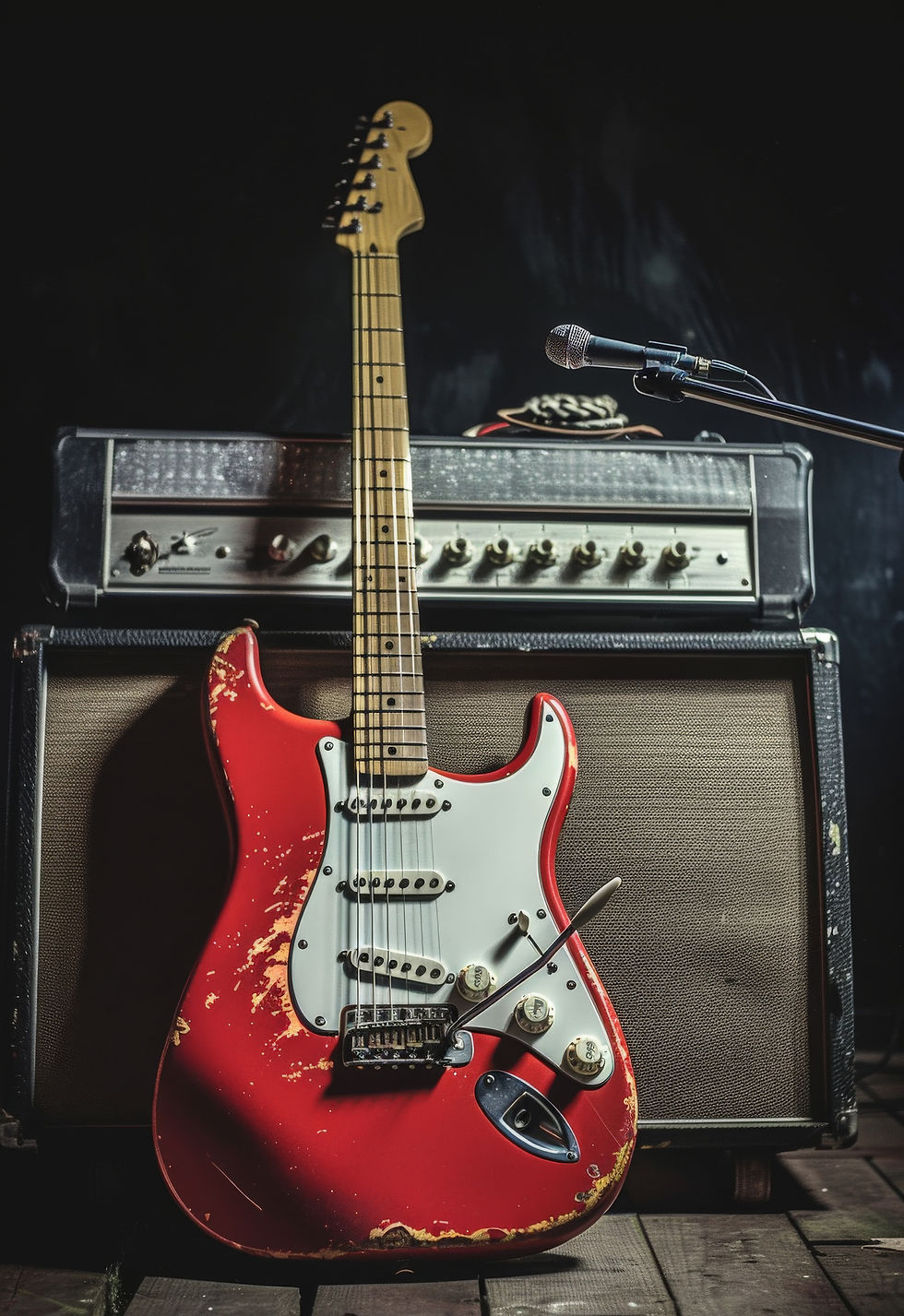How Many Different Tones Do You Need?
- The American Guitar Academy

- Sep 26
- 6 min read
At risk of explicitly stating the obvious, the answer to this question really depends on what music you are required to make, or if you simply like to have options at your fingertips. Since there is no way that every person will have the same requirements, or even want to apply the same effort to their guitar sound, I can only advise you given my personal experience and what works for me personally.

In The Past
This section is more historical, but not a piece on classic bands and what they used decades ago. Within the last decade or so, the use of digital solutions has become increasingly more commonplace. This section details what I used in a professional context within the last 10 years – though when I was younger it was simply guitar into amp!
With White Coast Rebels, the band used the Line 6 POD HD500 Pro for guitar sounds – myself and the other guitarist used one each. We used this equipment because it was small, sounded pretty good and was used in the recording of the songs. In later years I used my own Line 6 HX Stomp because of how much smaller and portable it was. All in all, they were set up in much the same way.
For the entire set, there were four sounds required for each of us. For myself, I had a clean sound (with some effects), a quiet rhythm sound (for dropping my volume during the others solo, to help lift it a bit more), and normal rhythm sound (same as the previous just louder) and a lead sound. The lead sound also had an optional harmonizer effect used in one song. The other guitarist was exactly the same, except his extra effect on the lead channel was a wah pedal.
With all of the above, we had our entire set covered. It was pretty straightforward and easy to set-up, and the use of the digital solution allowed us to go direct into a PA or into an amp if needed – a very welcome bonus when on tour! I learned how to really streamline what I use live in my years playing with this bad.
How Many Tones Do You Actually Need Then?
If you are playing in a function, or covers, band, there is a high chance that you will be playing songs from a variety of different decades and genres. If you are playing any Queen songs, you will know that Brian May uses modded Vox AC30 amps, or if you are embodying Slash with some Guns n Roses tunes you will need a hairy sounding, Marshall flavoured amp. The reality is, most of the people watching you play a live show will not notice, or not care, if you use a straight-ahead rock sound for both examples. Of course, you could have a different patch if you are using a digital solution, but still the crowd will not notice or care enough. The main deciding factor in this instance is if you are taking it seriously enough the change your tone so frequently – thankfully, most guitarists do not worry themselves with changing guitar for every song. I have seen this, and it is rather embarrassing to see, at a local level at least.
Your main focus should always be putting on a great show, and if you believe in crafting the perfect tone for every section of every song, then go ahead. However, I would prefer to focus on playing the parts correctly! The older and more experienced I get makes me try and develop my tone, allowing it to evolve as I do. I would rather approach a song with my own tone (where appropriate!) than any other way.

That leads me to this list that I have laid out below. I should state that some songs require a specific effect, like a chorus or phaser. These will fall under the category of ‘effect’ to make the list easier to digest.
Clean sound,
Clean sound with effect,
Crunchy sound, not too aggressive,
Heavier rock,
Heavier solo tone with effect,
A way of boosting each sound above.
It goes without saying that ambient effects should be used to taste, and with the solo tone, an increased ambient effect and maybe delay with tempo would be a good way to go. Each of these points can be paired with an effect and, depending on your set up, you could have a clean sound and activate specific effects as and when you need. This particular list is how I set-up my Kemper at the moment. The possibilities are definitely endless.
As for the solo tone and boosting the volume, I approach this in two different ways. The heavy rock solo tone is often EQ’d differently, and set up with a tempo matched delay. However, I also like to simply use the main rhythm tone, but louder, as a solo sound instead. In this case I try to avoid boosting with an effect or something in front of the amp, and instead opt for a volume boost (through an EQ block or dedicated pedal) in the effects loop of the amp/modeller. That way the sound is brought up in volume and the tone is unchanged.
Long story short, I personally think the optimal number of tones for myself is going to be six, however, this does not include the option to switch in and out effects if you are able to do so given your equipment. Fine adjustments to your tone can be made with the volume and tone controls on your guitar, but turning your volume from 6 to 10 on the guitar does not create distortion. Whilst specific circumstances might require more or less, I would say anywhere from three to six is going to cover all bases.
Famous Examples
At the time of writing this, YouTuber and touring guitarist Ola England is embarking on a journey to find the best solution for touring with the various acts he performs with. So far during this process, he has mentioned several times that he only needs three sounds: a clean, a rhythm and a lead sound – that is it.
The late, great BB King would often use one guitar and plug directly into one amp for a whole show. And variations in sound come from his dynamics and subtly manipulating the controls on the guitar – as simple as it gets, but this does not leave you with any safety blanket; your playing is very exposed in this instance.
UK-based session great and teaching extraordinaire Dave Kilminster was spent the last few years playing with Roger Waters and Steven Wilson. Wilson is a renowned songwriter and producer, and is very specific about the sounds that he creates, what his band members can produce and the overall sonic quality of the performance. In an interview with That Pedal Show many years ago, Kilminster mentioned that he has over 90 patch changes through the standard Steven Wilson set. He does go on to explain that many of them are similar or nearly identical to make switching between banks and patches easier, but the sheer number just boggles my simple mind.

Final Thoughts
Wrapping things up, I thought it would be beneficial to mention some of the positives to having a simpler approach to guitar tone, and few options to choose from. One of them is that it makes it easier for you to navigate and create, but one less thought of reason is that it is easier for a front of house engineer to sit your sound in a mix properly.
If you are changing guitar amps, or more importantly guitar cabs, the change to your tone can be significant and you will occupy a different space in the spectrum thus creating more work for the engineer. My advice would be, if you are going to change amps frequently or use many effects, at least try to keep the guitar amp consistent – this is in the case that you use a digital product. If you are using a guitar amp then it is likely that you will be using the same cabinet throughout the whole session. However, that does mean that the amp has to be miked unless it has an acceptable DI out, and miking a cab is an art in and of itself.
Hopefully this blog post has helped you to think more critically about how you think about your guitar tone, and encourages you to make the best choices for yourself. One thing I have learned is that no one rig works the same for every person.
Why don’t you ask your teacher, or someone at The American Guitar Academy, what they use and why. Maybe you will get some valuable insights that way!



